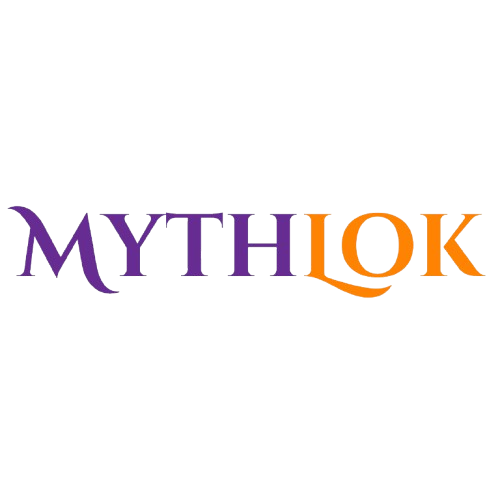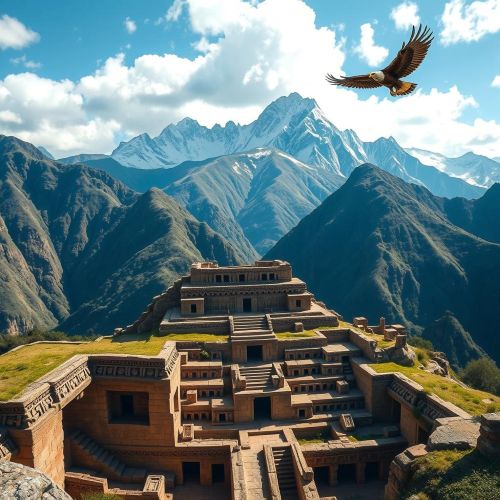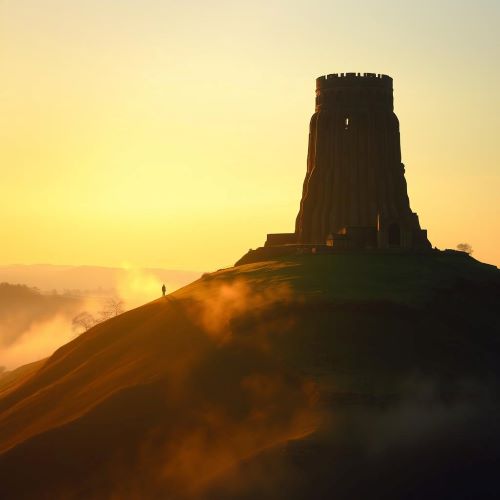The Labyrinth of Knossos : The Ultimate Maze
At a glance
| Description | |
|---|---|
| Mythology | Greek Mythology |
| Country | Greece |
| Closest airport | Heraklion International Airport “Nikos Kazantzakis” (HER) |
| Type | Constructed |
| Accessibility | 10/10 |
Introduction
Tucked away just outside Heraklion, the capital of Crete, the Labyrinth of Knossos is a place where ancient history and mythology blend seamlessly. As the centerpiece of the ancient Minoan civilization, Knossos holds the title of Europe’s oldest city and served as a political, religious, and cultural hub. Spanning over 22,000 square meters with more than 1,300 rooms, this remarkable palace complex offers an unforgettable glimpse into Bronze Age life. Whether you’re a fan of archaeology or simply curious about the legends of old, Knossos is a site that stirs the imagination.
Connection with Mythology
Greek myths breathe life into Knossos, most famously through the legend of the Minotaur—a creature said to dwell within a twisting maze beneath the palace. As the story goes, King Minos commissioned Daedalus, the renowned craftsman, to create a labyrinth so intricate that escape was nearly impossible. This prison held the Minotaur, the terrifying result of a curse from Poseidon.
To atone for the death of Minos’ son, Athens was forced to send tributes—seven boys and seven girls—to be sacrificed to the beast. That is, until the heroic Theseus stepped in. With help from Ariadne, Minos’ daughter, and her clever gift of a thread to retrace his steps, Theseus defeated the monster and found his way out.
While modern archaeology hasn’t uncovered a literal maze, the palace’s confusing layout—with countless rooms, staircases, and corridors—could easily have inspired such a legend. It’s a great example of how myth can spring from a real and awe-inspiring place.
Ways to Get There
Reaching Knossos is easy and convenient, especially if you’re staying in Heraklion. The site is just about 5 kilometers from the city center, making it a perfect half-day trip.
If you’re relying on public transport, hop on Bus #2 from Heraklion’s central station—it’s frequent and affordable. The ride takes around 20 to 30 minutes and drops you off right near the entrance. Taxis are quicker, around 15 minutes, and relatively inexpensive. Renting a car is another good option, especially if you’re planning to explore other parts of Crete.
Guided tours are also widely available and often include round-trip transport along with expert commentary that brings the ruins to life. And if you’re driving yourself, there’s convenient parking near the site.
What to Look For
Once inside, prepare to be amazed by what remains of this ancient marvel. The Central Court is a good place to start—it likely hosted public gatherings and religious ceremonies. From there, you can explore highlights like the Throne Room, which features a stone seat surrounded by griffin frescoes, possibly used for ceremonial rituals.
The Royal Apartments are another standout, adorned with iconic artwork like the Dolphin Fresco and the Bull-Leaping scene, which reflect both artistic talent and cultural significance. These images give us a vivid sense of daily life, spirituality, and myth in Minoan society.
Don’t miss the storage rooms filled with enormous clay jars, known as pithoi, once used to store olive oil and grain—evidence of the palace’s role in trade and administration. The palace even had a sophisticated drainage system, showcasing the Minoans’ engineering skills.
Taking a guided tour or renting an audio guide can really help make sense of the sprawling ruins. While there are signs throughout the site, they often provide limited detail, so a little extra context goes a long way.
Importance in cultural history
Knossos is more than just the backdrop for a famous myth—it’s a key to understanding one of the earliest complex civilizations in Europe. The Minoans, who thrived here from around 2600 to 1400 BCE, left behind a legacy of art, innovation, and global trade. Their influence stretched across the Mediterranean, connecting Crete with Egypt, the Levant, and the Greek mainland.
Sir Arthur Evans, the British archaeologist who began excavating the site in the early 1900s, named the civilization “Minoan” after King Minos. His reconstructions—though sometimes controversial—helped visualize the grandeur of Minoan life and sparked worldwide interest in this once-forgotten culture.
From vibrant frescoes to the symbolic double axe (labrys), Knossos continues to shape our understanding of ancient art, politics, and religion. The palace wasn’t just a royal residence—it was a hub of community life, layered with meaning and mystery.
Best time to travel
Knossos is open all year, but when you go can greatly impact your experience. Spring (March to May) is ideal—the weather is mild, flowers are in bloom, and visitor numbers are lower. Autumn (September to November) is similarly pleasant, with cooler temperatures and fewer crowds.
If you’re visiting in summer, be prepared for heat and heavy tourism. Temperatures can soar past 30°C (86°F), so it’s best to come early in the morning or late in the day. Wear a hat, carry water, and take breaks in the shaded areas around the site.
Winter visits can be hit or miss. While the crowds are minimal and the air is crisp, some parts of the site may have limited access, and occasional rain showers are common. Still, for those who prefer a quieter, more reflective experience, winter offers a peaceful alternative.
Buying tickets in advance—especially during high season—can save you a lot of waiting time. Arriving early not only beats the heat but also lets you enjoy the site before tour groups arrive.
Source
Contributors to Wikimedia projects. (n.d.). Knossos – Wikipedia. https://en.wikipedia.org/wiki/Knossos
Posarelli Villas. (2021). Minotaur’s Labyrinth At Knossos – Posarelli Villas. https://www.posarellivillas.com/travel-tips/2021/bedtime-stories/minotaur-labyrinth-knossos
lillyemma. (2023). Visiting Knossos, an Archaeological Splendor in Crete. https://itravelforthestars.com/knossos/
Nikos. (2020). The Palace of Knossos – Full of myths and mystery. https://greekmythologytours.com/blog/percy-jackson/knossos-palace
Frequently Asked Questions
Lorem ipsum dolor sit amet, consectetur adipiscing?
Lorem ipsum dolor sit amet, consectetur adipiscing elit. Praesent convallis vestibulum justo, ac tincidunt nunc vehicula quis. Nullam id dolor quis orci malesuada feugiat. Curabitur aliquet libero at urna ullamcorper, ac ultricies nulla dapibus.
Lorem ipsum dolor sit amet, consectetur adipiscing?
Lorem ipsum dolor sit amet, consectetur adipiscing elit. Praesent convallis vestibulum justo, ac tincidunt nunc vehicula quis. Nullam id dolor quis orci malesuada feugiat. Curabitur aliquet libero at urna ullamcorper, ac ultricies nulla dapibus.
Lorem ipsum dolor sit amet, consectetur adipiscing?
Lorem ipsum dolor sit amet, consectetur adipiscing elit. Praesent convallis vestibulum justo, ac tincidunt nunc vehicula quis. Nullam id dolor quis orci malesuada feugiat. Curabitur aliquet libero at urna ullamcorper, ac ultricies nulla dapibus.
Lorem ipsum dolor sit amet, consectetur adipiscing?
Lorem ipsum dolor sit amet, consectetur adipiscing elit. Praesent convallis vestibulum justo, ac tincidunt nunc vehicula quis. Nullam id dolor quis orci malesuada feugiat. Curabitur aliquet libero at urna ullamcorper, ac ultricies nulla dapibus.
Lorem ipsum dolor sit amet, consectetur adipiscing?
Lorem ipsum dolor sit amet, consectetur adipiscing elit. Praesent convallis vestibulum justo, ac tincidunt nunc vehicula quis. Nullam id dolor quis orci malesuada feugiat. Curabitur aliquet libero at urna ullamcorper, ac ultricies nulla dapibus.









